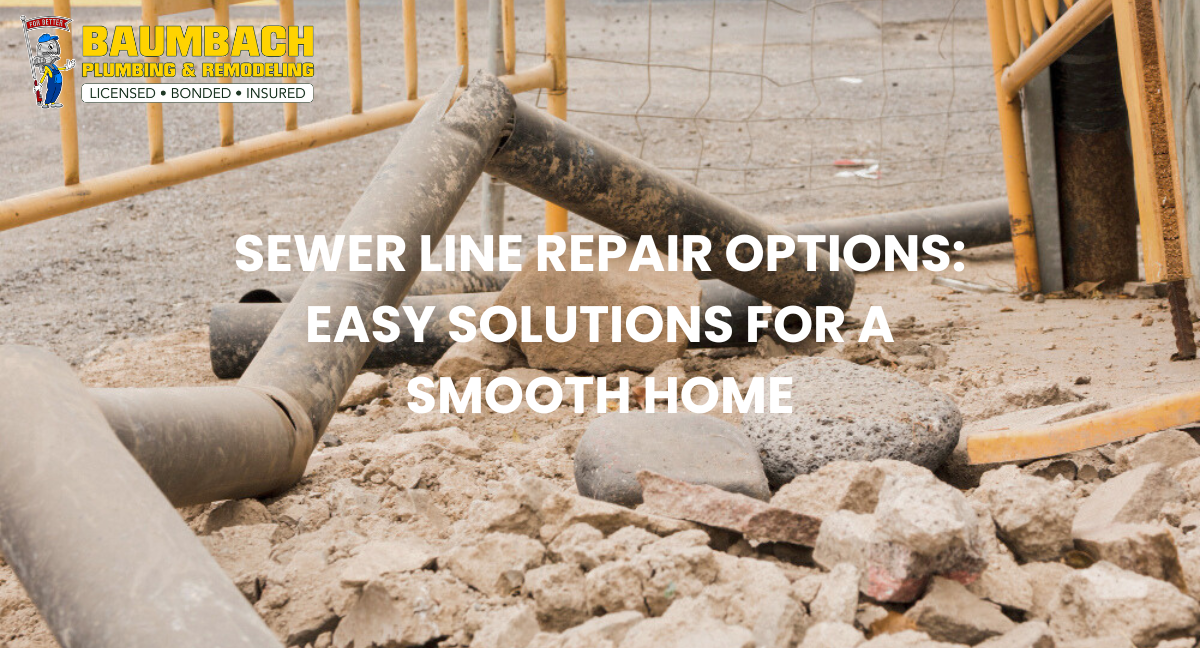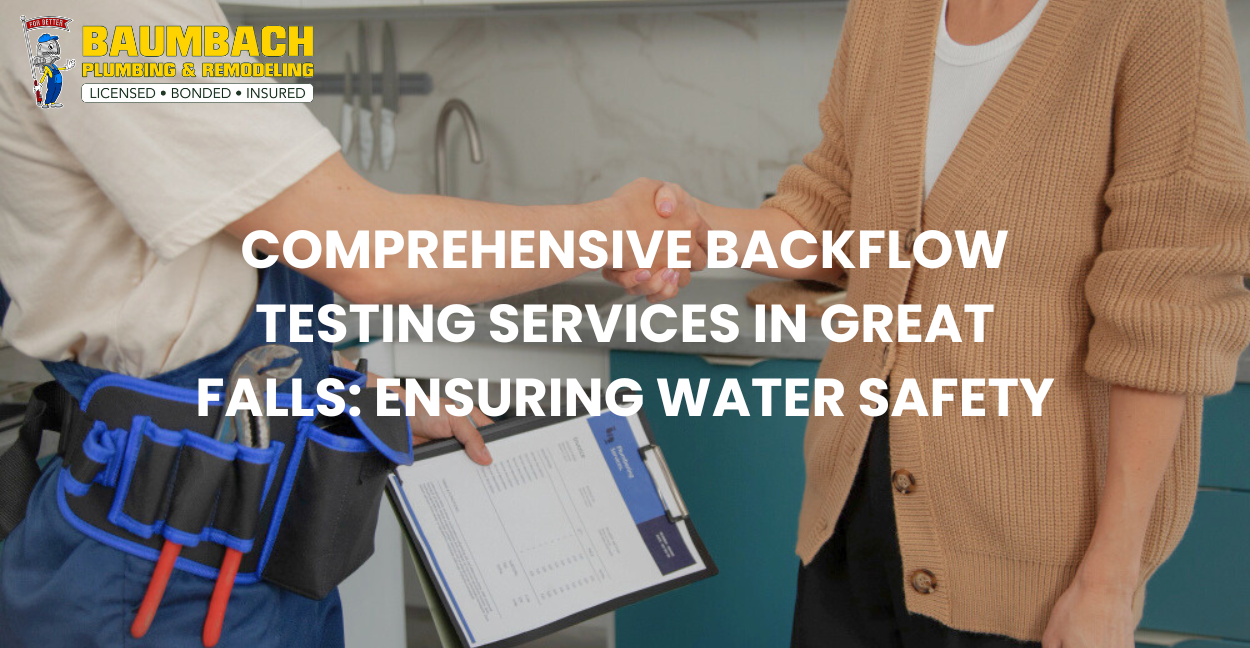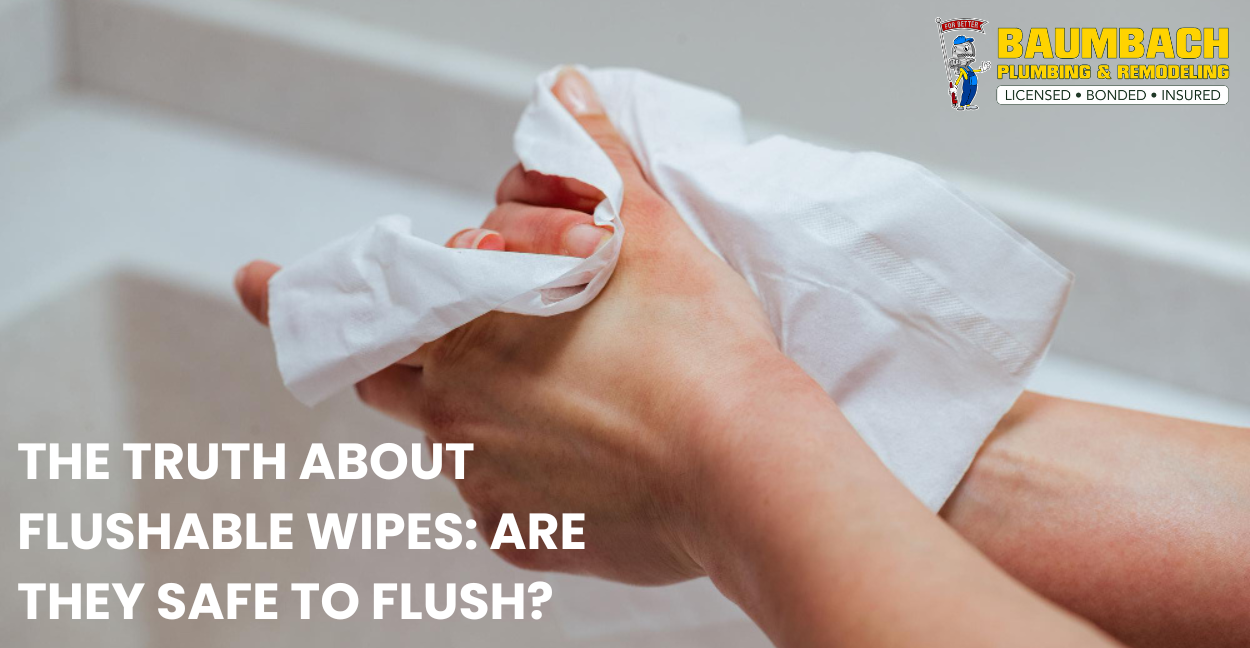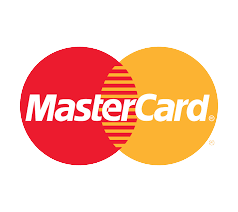Dealing with sewer line problems can turn a home into a headache. Imagine slow drains, unpleasant odors, and unexpected water backups. No one wants to face these issues, but understanding your sewer line repair options can make the process less overwhelming.
In this comprehensive guide, we’ll explore common sewer line problems, recognize signs that your sewer line needs attention, and delve into various sewer line repair methods. By the end, you’ll have a solid understanding of the solutions available, empowering you to make informed decisions about your home’s sewer system.
Identifying Common Sewer Line Challenges
1.) Addressing Pipe Damage
Think of pipe damage as a crack in your sewer system’s armor. Over time, pipes can deteriorate, leading to leaks and potential water damage. Swift action is essential to avoid costly repairs and disruptions to your daily life.
2.) Tackling Blockages and Clogs
Envision your sewer line as a pathway for wastewater to exit your home. Now, picture that pathway clogged with debris, soap scum, or grease. This blockage can result in slow drains and sewage backups, creating a messy and unpleasant situation.
3.) Nature’s Intrusion: Tree Root Issues
Nature sometimes interferes with our plumbing. Tree roots, seeking moisture, can penetrate sewer pipes, causing structural damage. This silent intruder can disrupt your sewer line’s functionality, leading to potential hazards.
4.) Corrosion and Deterioration: Aging Pipes
As time passes, so does the wear and tear on your sewer pipes. Corrosion and deterioration are natural processes that can compromise pipe integrity. Addressing these issues promptly is crucial to avoid more significant problems.
Recognizing Signs Your Sewer Line Needs Repair
1.) Slow Drains
Have you noticed water taking its sweet time to drain from your sink or shower? Slow drains often signal underlying issues in your sewer line, whether a simple clog or a more severe problem needing immediate attention.
2.) Unpleasant Odors
Foul smells in your home are never a good sign. Unpleasant odors may indicate a sewage leak or buildup within the pipes.
3.) Water Backups
Imagine flushing the toilet, only to have water back up into the bowl or your shower drain unexpectedly overflowing. Water backups are clear indicators of sewer line issues that require urgent repair to prevent further damage.
4.) Lush Patches in the Yard
A surprisingly vibrant patch of grass in your yard might seem positive, but it could be a sign of trouble below the surface. Lush patches can indicate a leaking sewer line, with the moisture promoting accelerated plant growth.
Exploring Sewer Line Repair Options
Traditional Excavation and Replacement
The traditional method involves digging up the damaged section of the sewer line and replacing it with new pipes. While effective, this approach can be disruptive and time-consuming.
Pros:
- Proven effectiveness in resolving a wide range of sewer line issues.
- Durable solution with new pipes offering an extended lifespan.
Cons:
- Disruptive and time-consuming due to extensive excavation.
- Expensive, considering labor, equipment, and material costs.
Trenchless Sewer Repair
Trenchless methods, such as pipe lining and pipe bursting, minimize the need for excavation. Pipe lining involves inserting a resin-coated liner into the damaged pipe, while pipe bursting breaks the existing pipe and simultaneously pulls a new one into place.
Pros:
- Minimal disruption to landscaping and structures.
- Faster completion times compared to traditional methods.
- Cost-effective over the long term.
Cons:
- Limited applicability for severe structural damage.
- Initial costs may be higher than spot repairs.
Pipe Lining (Cured-In-Place Pipe – CIPP)
Pipe Lining, or Cured-In-Place Pipe (CIPP), involves inserting a flexible tube coated with resin into the damaged pipe. The resin is then cured, creating a seamless and durable inner layer.
Pros:
- Suitable for addressing cracks, leaks, and minor deterioration.
- Minimally invasive, preserving landscaping and structures.
- Extends the lifespan of the existing pipe.
Cons:
- May reduce the pipe diameter slightly.
- Not ideal for severely collapsed pipes.
Pipe Bursting
Pipe bursting breaks the existing pipe and simultaneously replaces it with a new one. A bursting head fractures the old pipe while a new pipe is pulled into place.
Pros:
- Effective for replacing the entire sewer line.
- Minimizes surface disruption compared to traditional excavation.
Cons:
- Initial costs can be higher than other trenchless methods.
- Limited applicability in certain soil conditions.
Hydro Jetting and Mechanical Cleaning
Hydro Jetting involves using high-pressure water to clear debris, roots, and blockages from the sewer line. Mechanical cleaning uses rotating devices to achieve a similar result.
Pros:
- Preventive maintenance to extend the lifespan of the sewer system.
- Environmentally friendly compared to chemical treatments.
Cons:
- Temporary solution if underlying issues are not addressed.
- May not be effective for major structural damage.
Spot Repairs
Spot repairs target specific issues without replacing the entire sewer line. This may involve fixing a crack, sealing a joint, or addressing a localized problem.
Pros:
- Cost-effective for isolated problems.
- Minimizes disruption compared to full replacements.
Cons:
- Not suitable for widespread or extensive damage.
- Potential for recurring issues in other sections.
Chemical Root Treatment
Chemical root treatments use specific solutions to control tree root growth within the sewer lines without causing harm to the trees.
Pros:
- A non-invasive method for root control.
- Preserves the health of trees.
Cons:
- May require repeated treatments.
- Effectiveness can vary depending on the chemical used.
Sewer Line Relining
Sewer line relining involves applying a new lining to the interior of the existing pipe, enhancing its structural integrity.
Pros:
- Addresses structural issues without excavation.
- Improves the overall strength and lifespan of the sewer line.
Cons:
- May not be suitable for severely damaged pipes.
- The initial cost can be higher than traditional repairs.
Choosing the Right Repair Method
Factors to Consider
When deciding on a repair method, several factors come into play. The severity of the issue, budget constraints, and the layout of your property all influence the best course of action.
Cost Implications
Comparing the costs of traditional and trenchless methods is crucial. While trenchless repairs may have a higher upfront cost, the reduced disruption often results in overall savings.
Environmental Impact
Consider the environmental impact of your chosen method. Trenchless repairs generally have a smaller ecological footprint, making them a more sustainable choice.
DIY vs. Professional Sewer Line Repair
Risks of DIY Repairs
The allure of saving money through a do-it-yourself approach may be tempting, but DIY sewer line repair comes with significant risks. Without the necessary expertise, you could inadvertently make the problem worse, leading to more extensive and costly repairs.
Importance of Professional Expertise
Entrusting sewer line repair to professionals ensures that the job is done right the first time. Professionals have the knowledge, experience, and equipment to diagnose issues accurately and implement effective solutions. Call us now at Fairfax: 703-250-4200 or Arlington: 703-524-1250 for advice on eco-friendly solutions or to schedule a professional assessment of your clogged drain! Since 1928, Baumbach Plumbing & Remodeling has been providing superior master plumbing services for residents in Northern Virginia.
Future-Proofing Your Sewer Line
Preventive Maintenance Tips
Regular inspections, proper disposal practices, and managing tree roots are essential for preventing future sewer line issues. Taking proactive measures can save you from headaches down the line.
Regular Inspections
Schedule regular inspections to catch potential issues before they escalate. Identifying and addressing minor problems early on can prevent major disruptions and costly repairs.
Frequently Asked Questions
1.) Can a sewer pipe be repaired?
Yes, sewer pipes can be repaired using various methods. The chosen method depends on the extent and nature of the damage. Traditional methods involve excavation, removing the damaged section, and replacing it with a new pipe. Trenchless methods, such as pipe lining and pipe bursting, offer minimally invasive alternatives. Spot repairs and chemical treatments are also viable for addressing specific issues without replacing the entire sewer line.
2.) What are the methods of trenchless sewer line replacement?
Trenchless sewer line replacement involves techniques that minimize the need for extensive excavation. Two primary methods are commonly used:
a. Pipe Lining (Cured-In-Place Pipe – CIPP): This method entails inserting a resin-coated liner into the damaged pipe, which is then cured to create a durable inner layer.
b. Pipe Bursting: In pipe bursting, the existing damaged pipe is fractured, and a new one is simultaneously pulled into place. This process reduces surface disruption compared to traditional excavation.
3.) Which pipe is best for sewer line?
The choice of the best pipe for a sewer line depends on factors such as soil conditions, budget, and local regulations. Common materials used for sewer pipes include:
a. PVC (Polyvinyl Chloride): Known for its durability and resistance to corrosion.
b. HDPE (High-Density Polyethylene): Lightweight and flexible, suitable for trenchless installations.
c. Cast Iron: Sturdy and resistant to damage, ideal for areas with heavy traffic or load.
d. Clay: Traditional material with a long lifespan, but may be susceptible to root intrusion.
4.) How do you fix a hole in a sewer pipe?
Repairing a hole in a sewer pipe depends on the size and location of the hole. For small holes, epoxy or plumber’s putty may provide a temporary fix. More extensive damage may require:
a. Pipe Patching: Involves applying a patch over the hole using a specific material.
b. Pipe Lining (CIPP): Suitable for addressing larger holes, as it creates a new, seamless inner layer within the existing pipe.
c. Spot Repair: Targets and fixes specific areas of damage without replacing the entire pipe.
It is crucial to assess the severity of the hole and consult with a professional plumber for an appropriate and lasting solution.
5.) How Long Does Trenchless Repair Take?
The duration of trenchless repair varies based on factors such as the extent of damage, the chosen method, and site-specific conditions. However, trenchless repairs generally take less time than traditional excavation. On average, a trenchless repair may be completed within a day or two, offering a quicker and more efficient solution with minimal disruption to the property.
6.) How Can I Prevent Future Sewer Line Issues?
Preventing future sewer line issues involves adopting proactive measures:
a. Regular Inspections: Schedule routine inspections with a professional plumber to identify and address potential issues before they escalate.
b. Proper Disposal: Avoid flushing non-biodegradable items, grease, and other debris down the drains to prevent blockages.
c. Tree Root Management: Plant trees away from sewer lines and use root barriers to prevent root intrusion.
d. Avoid Harsh Chemicals: Refrain from using harsh chemicals that may damage pipes; opt for environmentally friendly solutions.
e. Install a Backwater Valve: Protect your sewer system from sewage backup during heavy rainfall by installing a backwater valve.
Implementing these preventive measures can significantly reduce the likelihood of future sewer line issues and contribute to the longevity of the sewer system.
Baumbach Plumbing & Remodeling Can Help You with Sewer Line Repairs
Baumbach Plumbing & Remodeling, LLC is a certified master plumber serving residential clients in Northern Virginia. Since 1928, Baumbach Plumbing & Remodeling has been providing superior plumbing and bathroom remodeling services to homeowners as a family-owned and operated business. Its current owner, Andy Baumbach, has been upholding the care and attention to detail once demonstrated by his family, most notably his late father William J. Baumbach, and sister Lillian A. Baumbach, the first-ever female master plumber.
If you find yourself facing sewer line issues, remember that our company has a wealth of experience in providing effective and reliable solutions. We understand the complexities of sewer line repair and are here to help. Don’t hesitate to get in touch. We’re here to guide you through the process and provide the assistance you need. Visit our About Us page to learn more about us.
Conclusion
In the complex landscape of sewer line repair options, proactive decision-making is crucial. Whether opting for traditional or trenchless methods, addressing issues promptly ensures a smoother journey through homeownership. Don’t let sewer line problems linger – take action today to safeguard your home and peace of mind.






